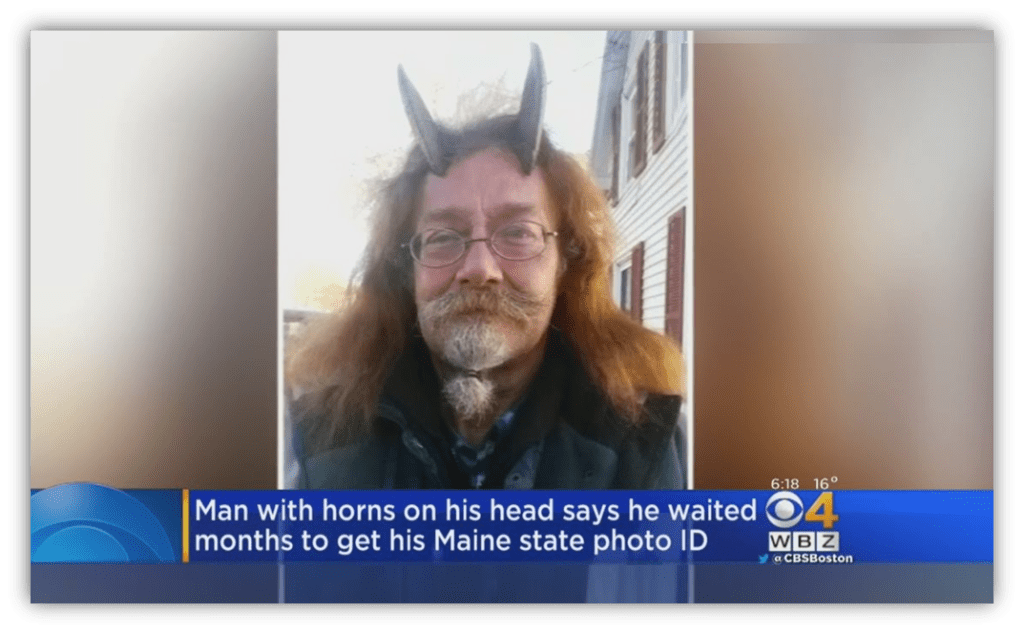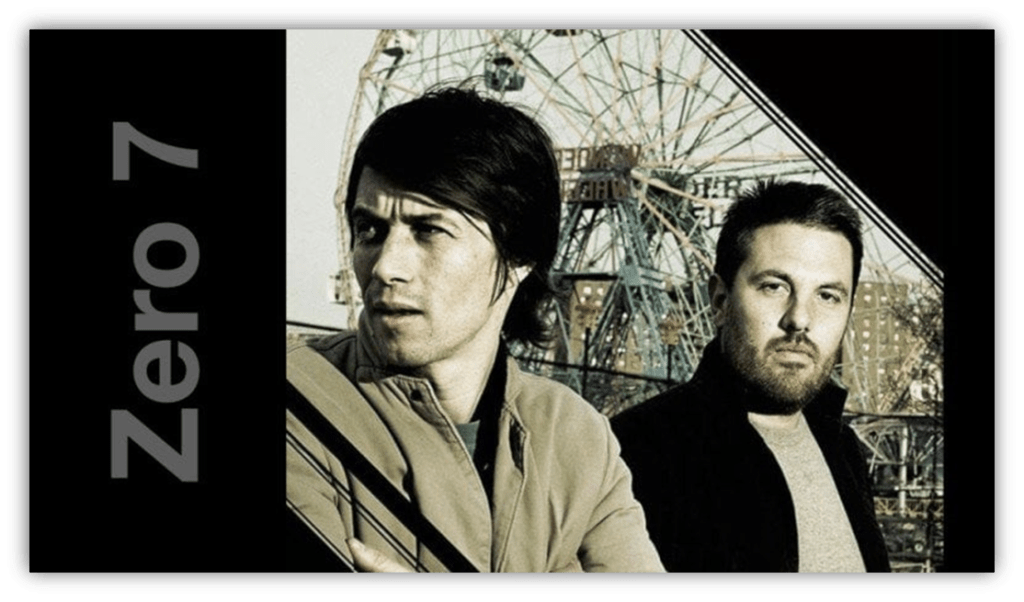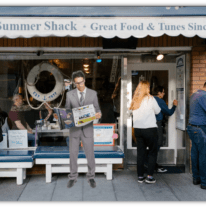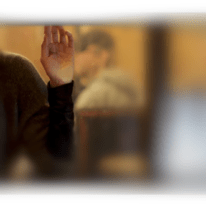Consider: A New York accent…

… Is nothing like a Louisiana accent…

…Which is nothing like a Minnesota accent…
…Which is nothing like a Maine accent.

You were expecting a third T-shirt joke.
But, come on – this is way better,
The United States is huge, so regional differences aren’t surprising. But England is small and it has gobs of accents. There are even a few tiny London neighborhoods that have an accent you won’t hear ten blocks away.

Looking at you, Cockneys.
So it shouldn’t be surprising that different cities have their own musical sound. It may be Rock or Jazz or Country, but each scene puts its own accent on it. Liverpool was home to many British Invasion Rock & Roll bands, Canterbury was a hotbed of Prog Rock, and we wouldn’t have raves without Manchester.
And that brings us to Bristol, in the west of England, near the border with Wales.
Bristol is a port city.

And its population included a mix of ethnic and cultural backgrounds, including a particularly strong Caribbean community.
In the late 1980s and early 1990s, this diversity led to a blend of musical influences, including Post-Punk, Hip Hop, Reggae, and Dub.
Dub is essentially remixed Reggae. Often, the vocals are removed so many Dub tracks are instrumentals, but the most important element is the bass and drums are brought to the foreground.

The heavy basslines and reverb effects of Dub significantly influenced the sonic palette of Trip Hop.
The other key ingredient is that Bristol’s eclectic mix of musicians were open-minded. They experimented with various genres and styles, and that made Bristol the perfect incubator for something new to happen. Closed minds don’t innovate.

The popularity of sound systems, which were a mainstay of the Caribbean community, brought Reggae and Dub music to the forefront, while the minor key modernism of British Post-Punk and the street ethos of American Rap had their influence, too.
Trip Hop is a sonic blend of prominent Hip-Hop beats, downtempo rhythms, and moody atmospheres. It’s music that’s equally at home in hip coffee shops, romantic bedrooms, and dark nightclubs selling drugs on the down low.
One set of musicians, DJs, rappers, and singers called themselves The Wild Bunch, after the Sam Peckinpah film.

They formed in 1982, running a sound system at all night parties in clubs and warehouses.
Their performances were known for their eclectic mix of styles, laying the groundwork for Trip Hop’s genre-blending approach.
The Wild Bunch were a loose collective of artists. And in 1988 several members formed something that more resembled a band. They called themselves Massive Attack.

And pretty much invented Trip Hop.
While their second album, Mezzanine, is better known, their 1991 debut album, Blue Lines, is widely considered the first Trip Hop album. Its blend of Hip-Hop drums, soulful vocals, and Dub-infused basslines set the template for the genre.

Tracks like “Unfinished Sympathy” and “Safe from Harm” displayed a moody sound that was both new and familiar. Its sound — the R&B drum samples, mid-tempo grooves, soulful vocals, round bass sound, and atmospheric reverb — is the very blueprint of Trip Hop.
Following the success of Massive Attack, other Bristol-based artists gained notice.
Portishead, named after the town just west of Bristol, released their debut album Dummy in 1994.

The album’s cinematic soundscapes, haunting vocals of Beth Gibbons, and dark production won over both audiences and critics.
Tracks like “Sour Times” and “Glory Box” became defining songs of the genre, with their noir-like melodies and atmosphere.
Portishead didn’t like the Trip Hop association and went in an avant-garde direction, using fewer samples but more electronics. We’ve seen this before:
Artists unintentionally spearhead a genre – and then distance themselves from it. Emo bands didn’t like being called Emo, some Goth bands preferred the “Post-Punk” label

And Grunge bands just wanted to sulk loudly.
Tricky, AKA Tricky Kid, born Adrian Thaws, was a member of both The Wild Bunch and Massive Attack but left after disputes within the band.

He grew up in a musical family as his father, grandfather, and brother ran one of the most popular sound systems in Bristol.
They weren’t well off, however, and young Tricky fell into crime and did some forgery-related jail time at the age of 17. It straightened him out and he vowed to never to go to prison again.
His solo work brought a darker, more experimental edge to Trip Hop.

Maxinquaye, his 1995 debut album, featured innovative production and the innately dreamy vocals of Martina Topley-Bird who recorded most of the songs in a single take.
That immediacy, and the album’s murky beats and introspective lyrics, further expanded the boundaries of the genre. Songs like “Overcome” and “Black Steel” became iconic.
As Trip Hop gained popularity, it began to spread beyond Bristol, influencing artists worldwide.
London-based Morcheeba had a more accessible, Pop-infused take on Trip Hop.

Their 1996 debut album, Who Can You Trust?, combined downtempo beats with lush melodies and the smooth vocals of Skye Edwards, producing hits like “Trigger Hippie” and “The Sea.”
DJ Shadow, an American producer, released the album Endtroducing…. in 1996.

It’s an instrumental album that blended Hip-Hop, Funk, and Ambient influences into a cohesive Trip Hop sound. The album is almost entirely made up of samples meticulously stitched together.
At many points, it’s hard to believe it’s not a band of musicians playing together in the same room. The flawless, atmospheric production made it a landmark release.
The legacy of Trip Hop is also evident in the continued success of its early artists.

- Massive Attack’s later albums, such as 1998’s Mezzanine, continued to push the boundaries of the genre with darker, more experimental sounds.

- Portishead’s third album, unsurprisingly called Third, received critical acclaim for its innovative approach and reaffirmed the band’s importance in the Trip Hop canon, despite their dislike of being labeled as such.
By the late 1990s and early 2000s, Trip Hop had firmly established itself as a genre with a lasting impact.
Its influence can be seen in various musical styles, from Electronic and Alternative to Pop and Indie music. Well-known artists like Radiohead, Björk, and Garbage have incorporated Trip Hop elements into their music, as have Pop singers like Kylie Minoque, The Weeknd, Lana Del Ray, and Madonna.
A subgenre called Post-Trip Hop started around the turn of the century.
It’s not much different from Trip Hop except that there’s a little less bass and more Pop melodies.

Bands like Zero 7, Hooverphonic, Air, and Sneaker Pimps fall into this category, as do the later works by Massive Attack and Portishead.
From its origins in the vibrant Bristol scene to its influence on contemporary artists, Trip Hop’s creativity and sexy allure continues to push the genre forward:
Blending elements of Electronic, Pop, Rock, and more – while maintaining the atmospheric and emotive qualities that defined the original Trip Hop style. It thrives as a genre in current artists like Hoodie & James K, Dean Blunt, and Vegyn.

It resonates with anyone seeking music that is both introspective and inventive.
What’s more, the influence of the genre’s moody, atmospheric soundscapes and inventive production techniques is so pervasive that listeners who are unfamiliar with Trip Hop’s history may not recognize it in the Pop music they listen to today.
And so: This concludes Season 6 of “Theoretically Speaking.” Mostly because I’ve run out of genres on the Periodic Table I haven’t already done.
Thanks for reading- and stay tuned:
There’s lots more music stuff on the way.
Suggested Listening – Full YouTube Playlist

Safe From Harm
Massive Attack
1991

Sour Times
Portishead
1994

Overcome
Tricky
1995

Trigger Hippie
Morcheeba
1996

Sugar Water
Cibo Matto
1996

Midnight In A Perfect World
DJ Shadow
1996

Milk
Garbage
1996

Bachelorette
Björk
1997

Mad About You
Hooverphonic
2000

Clint Eastwood
Gorillaz
2001

Breathe In
Frou Frou
2002

When I’m Small
Phantogram
2011

Blue Jeans / Carmen
Lana Del Rey
2012

Applaud
Yves Tumor
2019

Strawberry
Doss
2021

Tears Can Be So Soft
Christine and the Queens
2023

065 (Scorpio)
Hoodie & James K
2023

A Dream Goes on Forever
Vegyn
2024
Let the author know that you liked their article with a “Green Thumb” Upvote!






Take a bow, my friend. It’s pretty incredible that you’ve taken us through so many forms of music, and done so in such an entertaining way.
I can’t wait to see what you’ve got going next, once you get a little well-deserved summer vacation!
Thanks, Chuck! I’m going to chill to some Trip Hop for a little while and then get back to work.
Nice topic. I’ll be getting into this in the future, but my sister turned me on to that first Massive Attack album. That hypnotic bass line on Safe From Harm had me at hello.
Trip hop takes me right back to my first year at university. Had a friend in halls of residence that played Dummy and Maxinquaye practically on a loop. Instantly takes me back to long nights in their room talking for hours about everything and nothing.
The trip hop label quickly went out of favour as it became termed ‘coffee table’ music. As in an ever so tasteful addition to any middle class home, trying to show off how refined their taste was. It wasn’t surprising the original acts ran from it. As a genre it became watered down and over used on tv soundtracks trying to create the right mood.
When I wrote about the Liverpool and Manchester music scenes a big part was the connections. Bristol is the same but condensed to one period.
The Wild Bunch had Nellee Hooper as DJ. He produced Massive Attack’s second album Protection as well Soul II Soul, Bjork and Sinead O’Connor (including Nothing Compares 2 U).
He’s also responsible for the Romeo + Juliet soundtrack along with Scottish composer Craig Armstrong. Armstrong who also worked with Massive Attack and released his own albums on the band’s Melankolic label.
Then there’s Neneh Cherry who wasn’t from Bristol but became part of the scene with The Wild Bunch.
Robert Del Naja and Mushroom of Massive Attack worked on her debut; Raw Like Sushi along with Nellee Hooper and in return Neneh contributed to Blue Lines.
Massive Attack were also great at picking collaborators. Shara Nelson on Blue Lines, especially Unfinished Sympathy which is one of the greatest gut punches of a song ever . It only charted at #13 but in 1998 it topped Radio 1s 100 best tracks ever poll.
On follow up album Protection it was Everything But The Girls Tracy Thorn and Ben Watt. Their quiet acoustic thing seemed a leftfield choice but worked well and obviously influenced them as a year later they were having their biggest success with Missing and the subsequent album which took them in an electronic / dance music direction.
There was crossover in the songs as well. Tricky was part of Massive Attack for the first two albums til he fell out with them. He reused and reworked Eurochild and Karmacoma from Protection into his own Hell Is Round The Corner and Overcome on Maxinquaye.
HellIs Round The Corner also prominently features a sample of Ike’s Rap II – just as Portishead’s Glory Box did.
One other famous Bristol name from around the same time is Banksy. Given the secrecy over his real identity and the fact that Robert Del Naja was also a graffiti artist it’s been rumoured that they are one and the same person. Banksy has even said that he copied from Del Naja.
Great work Bill, time for a well earned rest.
This is an excellent addition to the article. I meant to mention Nellee Hooper. He’s done some great work during and since the Wild Bunch years. I missed the Neneh Cherry connection though, that’s very interesting and it makes sense. Thanks, JJ!
I think my first “Am I Getting Old??” moment came when I entered graduate school, and I headed a lab full of undergraduate assistants.
And when chatting about various music I like, one of them made a face of pure #OKBoomer derision. “Trip hop?” What is that?”
Despite being a question, they didn’t really care to hear an answer.
Anyway, for me, trip hop was just great music. It was dark, it was edgy. But it was also reserved, elegant, beautiful. Equally great for studying or drugged out sex. What more could one ask for??
But obviously as their new team leader, I wasn’t going to make that case. Instead, I just quietly accepted my grandpa status. And then went home and put on some Tricky.
Fantastic season – thank you for the enlightenment.
I listened to the whole playlist, Bill. With mixed reaction. Some I liked, like the Massive Attack song and “Sugar Water” and Sneaker Pimps. I’ve heard of a couple of these groups, but none of their songs…except DJ Shadow. I love this concept of piecing together whole songs with nothing but samples, and a couple of times I’ve tried to get into it, but something about it bugs me a little, and I’m not sure what it is.
But overall, this genre is pretty digestible. Good background music. If you asked me yesterday, I could not have pegged Trip Hop, but today I can. Thanks, Teach.
Great article! I would point out a couple of minor errors: Mezzanine is Massive Attack’s third album, not second; and “The Sea” was off Morcheeba’s second album Big Calm, not their debut.
Classic trip-hop that should be mentioned: Kruder & Dorfmeister’s sterling remixes, which scanned a number of 90s electronic sounds but found trip-hop gold on Rockers Hi-Fi’s “Going Under”. Anyone who remembers The O.C’s famous Tijuana episode will instantly recall this menacing bop.
https://youtu.be/H6DD9G_Mijo?si=uTApH5d6eN1jWhiK
Oopsie, yes, you’re correct. Protection was their second album.Ditto on Morcheeba.
I’ve seen the name Kruder & Dorfmeister but I’m not familiar with their stuff. This is a good track, thanks for bringing them up!